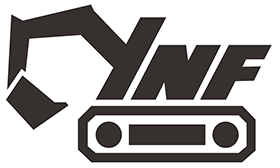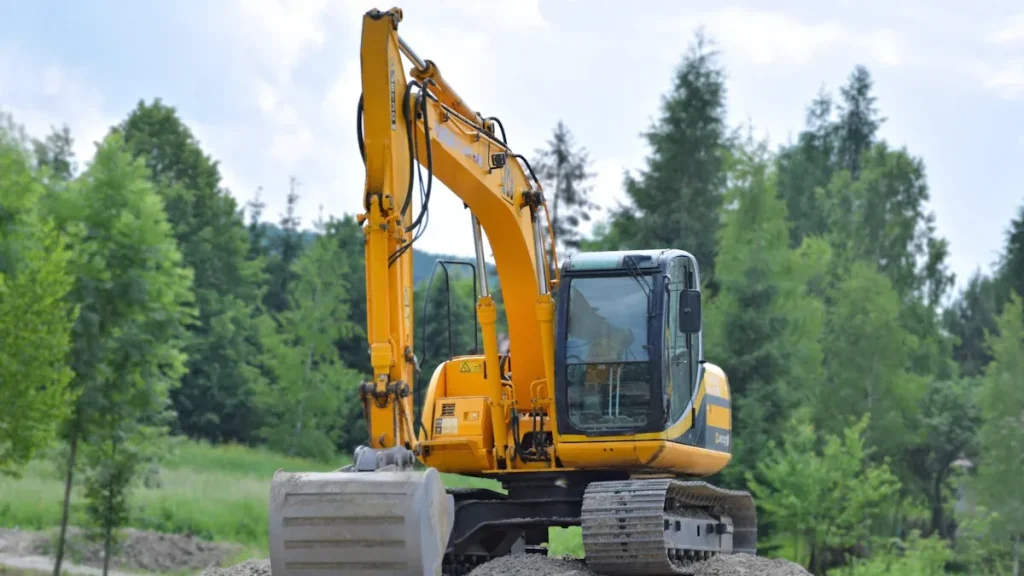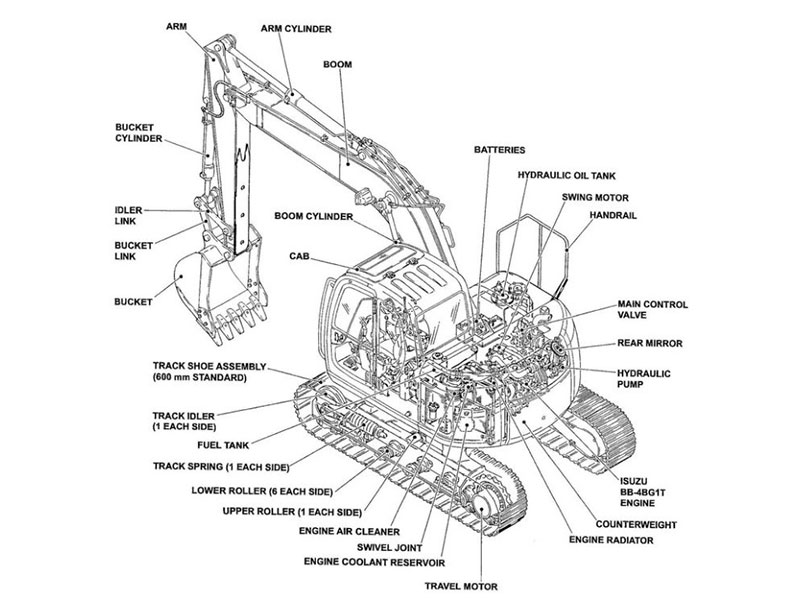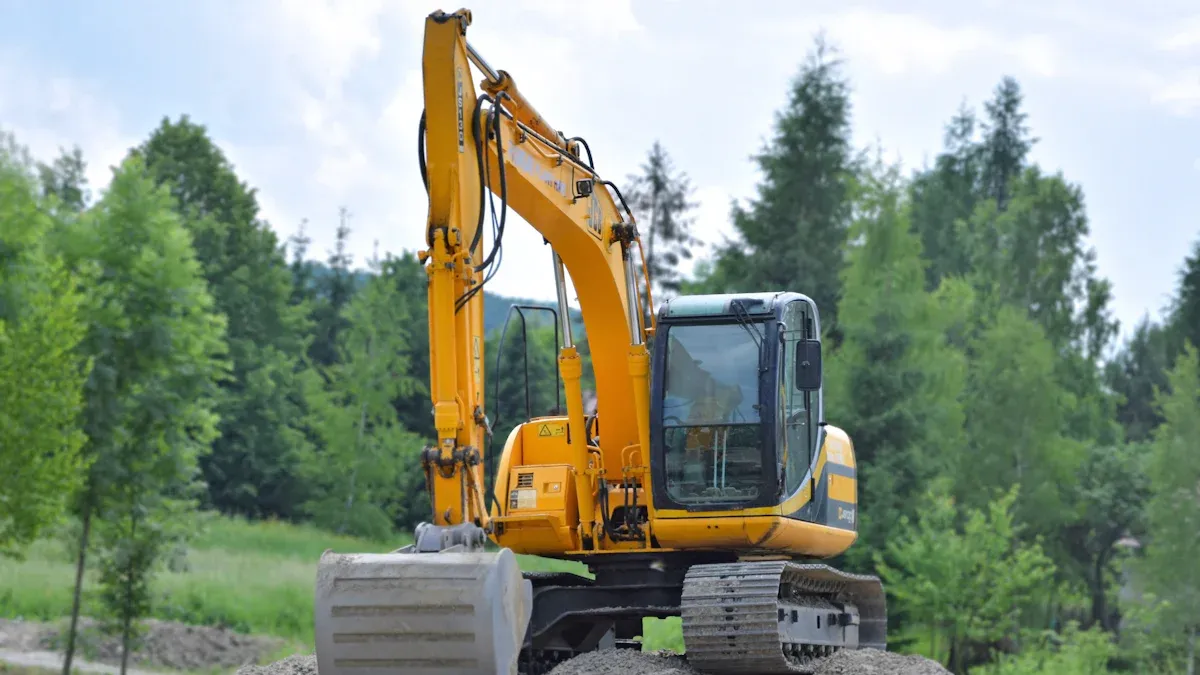
An excavator final drives system is a crucial component for movement. It transfers power from the engine to the tracks, enabling the excavator to move and turn efficiently. Each excavator is equipped with two excavator final drives, one on each side, which assist with steering and control. In larger machines, the excavator final drives provide the necessary strength for heavy-duty tasks. These excavator final drives ensure the excavator performs effectively on all types of terrain.
Key Takeaways
Excavator final drives move engine power to the tracks. This lets the machine move, turn, and do hard jobs. Planetary gears inside the final drive slow down speed. They also make more torque. This gives the excavator more power and control on rough ground. The final drive has important parts. These are the hydraulic motor, planetary gears, and a strong gearbox case. These parts help protect and support smooth work. Regular care is important. You should check oil, seals, and listen for strange sounds. This helps stop damage and makes the final drive last longer. Finding problems early, like leaks, noises, or metal pieces, can save money. It also keeps the excavator safe and working well.
Excavator Final Drives
What They Are
An excavator final drive is a key part of the machine’s power system. This drive sits at the end of the powertrain and connects directly to the tracks. The main job of the final drive is to take the power from the engine and turn it into movement for the excavator. Inside the final drive, planetary gears work together to reduce the speed from the engine and increase the force, or torque, needed to move the tracks. These gears help the excavator handle heavy loads and rough ground. Most final drives use strong metal seals and self-lubrication to last longer and work smoothly. The final drive can come in different designs, such as single, double, or triple reduction, to match the needs of different excavators. Each drive can handle a wide range of torque, from 2,500 to 25,000 lb-ft, which means it can power both small and large machines.
Note: The final drive is the last step in the power system before the tracks start to move. Without this part, the excavator would not be able to move or turn.
Role in Excavators
Excavator final drives play a vital role in how the machine moves and works. Each excavator has two final drives, one on each side. These drives control the left and right tracks. When the operator wants to move the excavator forward, both final drives work together to move the tracks. If the operator wants to turn, one final drive moves faster or slower than the other. This setup lets the excavator turn smoothly and handle tight spaces. The final drive also helps the excavator climb hills, cross rough ground, and carry heavy loads. By reducing the speed and increasing the torque, the final drive gives the excavator the power it needs to do tough jobs. The design of the final drive, with its strong gears and seals, keeps the excavator running even in harsh conditions.
The final drive:
Transmits engine power to the tracks.
Reduces speed and increases torque.
Allows the excavator to move, turn, and handle heavy work.
Uses durable parts for long life and smooth operation.
Excavator final drives make it possible for the machine to move the tracks with strength and control. Without these drives, the excavator would not be able to perform its basic tasks.
Final Drive Components
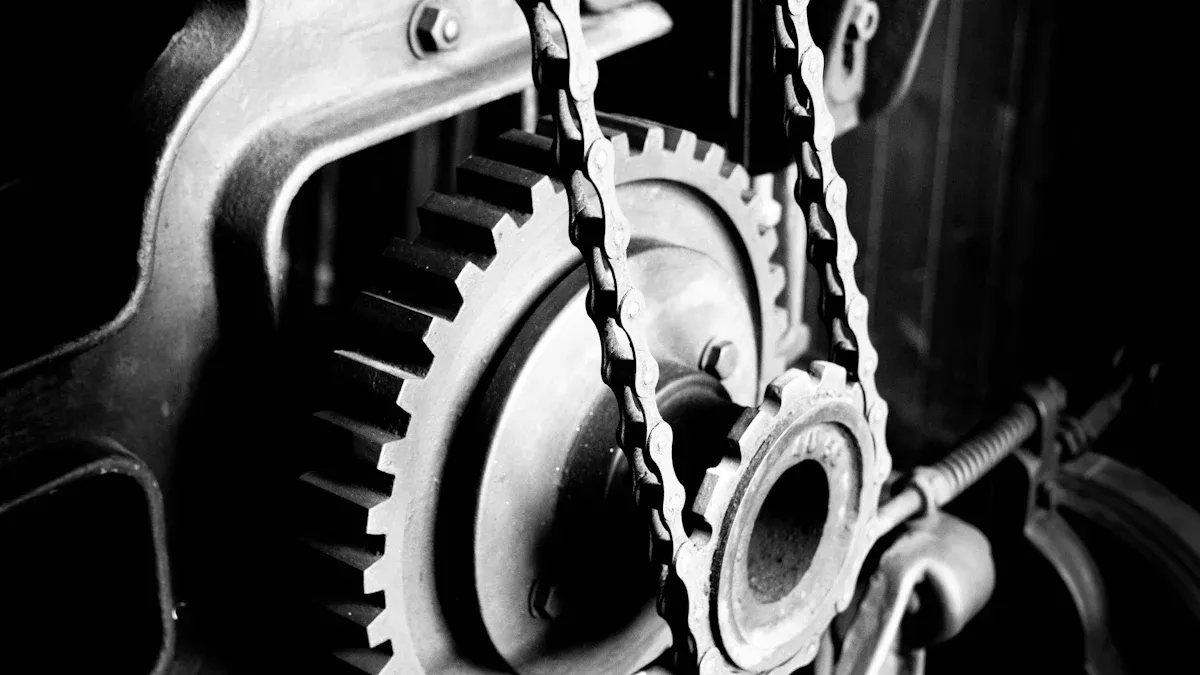
Excavator final drive systems have many important parts. These parts work together to help the machine move. Each part has a special job. They change hydraulic power into the force that moves the tracks. The main parts are the hydraulic motor, planetary gears, and the gearbox with its housing.
Hydraulic Motor
The hydraulic motor is in the center of the final drive. It gets pressurized hydraulic fluid from the pump. The motor acts like a mover. It turns the fluid’s energy into spinning movement and torque. This helps the final drive turn the tracks with power and control. Many motors use an axial piston design. This design is small and works well. Some motors have two speeds. This lets the operator pick more speed or more power. These motors often have a parking brake for safety. They also have direct mounting for easy setup. Quality rules like ISO9001 make sure each motor is reliable and works well.
Planetary Gears
Planetary gears are the main part of the power system. This gear set has a sun gear in the middle. Planet gears go around the sun gear. An outer ring gear holds them all. When the hydraulic motor turns the sun gear, the planet gears spin and move the ring gear. This setup makes the motor slower but gives more torque. The planetary gear system spreads the work over many gears. This makes the final drive strong and efficient. The small size saves space. It helps the final drive fit inside the track frame.
Planetary gears:
Make the speed lower and the torque higher.
Spread out the force so they last longer.
Help the excavator move smoothly and exactly.
Gearbox and Housing
The gearbox holds the planetary gears and links them to the tracks. The housing keeps all the parts safe from dirt, water, and hits. Makers use strong materials like anodized aluminum PBAS®, painted steel, and tough plastics like polypropylene and ABS. These materials fight off wear, chemicals, and scratches. This helps the final drive last a long time. Careful building and special coatings make it even stronger. The gearbox and housing help the final drive work well, even in rough places.
Tip: Check the final drive housing often. This can help you find leaks or damage early and stop bigger problems.
How It Works
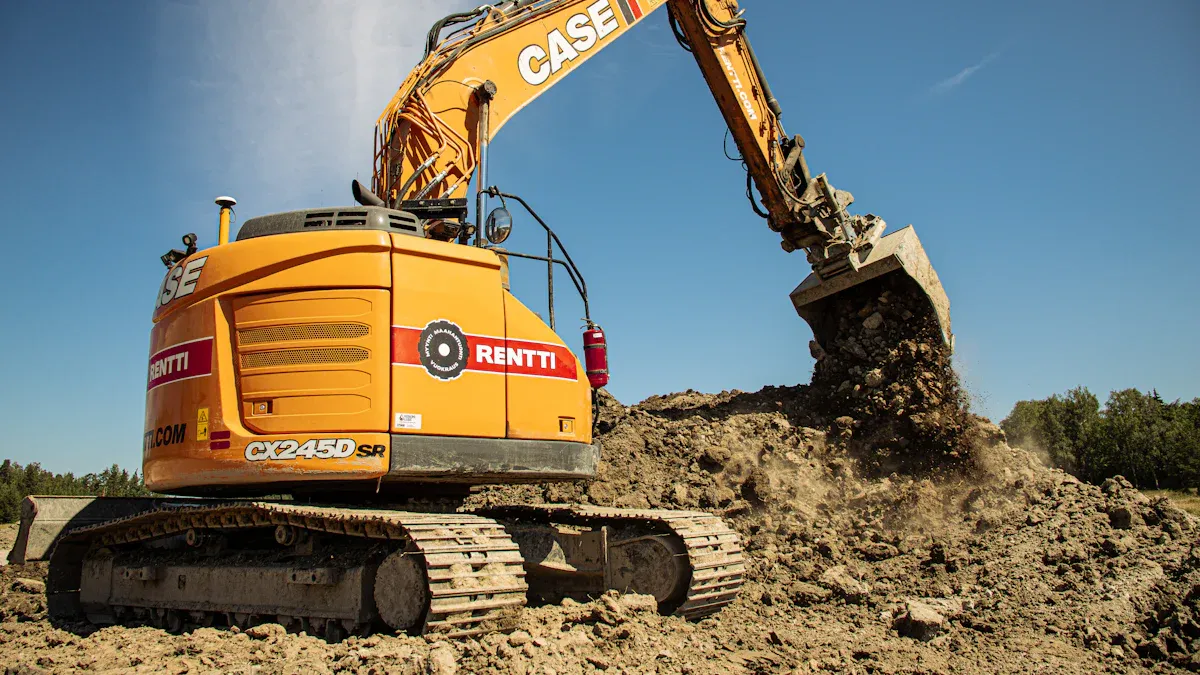
Power Transfer
A working final drive starts with the hydraulic motor. The engine powers a pump that pushes fluid through hoses. This fluid goes to the final drive. The hydraulic motor is inside the final drive housing. When the fluid enters, it moves pistons or gears. These parts spin the motor’s shaft. The shaft connects to the first gears in the final drive.
The excavator’s powertrain depends on this process. The hydraulic motor turns fluid energy into spinning force. This force moves the gears inside the final drive. The gears turn the sprocket, which pulls the tracks. Each final drive works on its own side of the excavator. This lets the operator steer and move the machine exactly.
Tip: Keeping the final drive in good shape helps power move smoothly. It also helps the excavator travel well on any ground.
Speed Reduction and Torque
The final drive uses planetary gears to control speed and torque. These gears are between the hydraulic motor and the tracks. When the motor turns the sun gear, the planet gears spin around it. The ring gear keeps everything together. This gear system slows down the motor’s speed. At the same time, it gives more torque to the tracks.
Many excavators use double planetary reductions. This means two sets of planetary gears work together. The first set slows the spin and adds torque. The second set does this again. Double reduction makes the excavator strong for heavy loads and steep hills.
Final drives in big machines must do hard work. The planetary gear setup can have one or two stages. Each stage lowers speed and increases torque. This helps the excavator grip the ground and use power better. In a double reduction, the input shaft turns an inner gear. The carrier moves around the ring gear. The inner carrier connects to an outer gear, which spins at the same speed. The outer carrier moves around its ring gear, making a second reduction. This outer carrier connects to the track and sends force to the ground.
Key points about speed reduction and torque:
Planetary gears slow speed and boost torque.
Double reductions give more strength to big excavators.
The final drive’s design helps with grip and power.
A good final drive lets the excavator move slowly but with strong force. This helps the machine dig, lift, and cross rough ground. The final drive’s power comes from its smart gear setup.
Importance for Excavators
Performance Impact
Final drives are very important for how an excavator works. They help the machine move, turn, and lift heavy things. When the final drive is in good shape, the excavator can go over bumpy ground and climb hills. It can also dig with a lot of power. Operators see better grip and smoother moves when the final drives are high quality. The drive system lets the excavator react fast to controls. This makes it easier to work in small spaces or on rough ground.
A good final drive keeps the machine working well. It must give the right torque to the tracks. This power lets the excavator push, pull, and lift things. If the final drives get worn out or break, the machine loses power and control. It might slow down, slip, or even stop moving. That is why the final drive is one of the most important parts of an excavator.
Tip: Operators should listen for odd sounds or feel changes in how the machine moves. These can be signs of trouble in the final drive.
Reliability and Lifespan
How long final drives last depends on many things. Operators and owners need to watch these things to keep their machines working well.
How many hours the machine works affects final drive life.
The kind of job, like digging or lifting, changes how fast it wears out.
Tough places, like mud or dust, make damage happen faster.
Good and regular care helps a lot.
Worn bushings or joints make the machine less exact and use more energy.
Leaks in the hydraulic system can wear out parts faster.
Not having good monitoring makes it hard to find problems early.
Taking care of the final drive is very important. The best way is to use different types of care, like checking before something breaks. Reliability Centered Maintenance (RCM) helps owners pick the right care and timing. This plan looks at how the machine works, what can go wrong, and how to fix it before it breaks. By using RCM, owners can make final drives last longer and save money on repairs. Regular checks, cleaning, and using the right parts keep the excavator and its drive system strong.
Final Drive Issues & Care
Common Problems
Excavator owners can spot warning signs when a final drive has trouble. These signs help them find problems early and stop bigger repairs. Here are some common things to look for:
If you see metal bits on magnetic plugs, gears or bearings may be wearing out inside the final drive.
If seals are bad and oil leaks out, the drive can get damaged and not last as long.
Weird noises or shaking often mean something is broken inside.
If the hydraulic system gets too hot, it could mean there is stress or something is wrong.
If the machine uses more fuel but does not do more work, the drive might not be working right.
Operators should watch for these signs. Fixing problems quickly can stop worse damage and lower the chance of needing a new final drive.
Maintenance Tips
Doing regular care helps final drives work well and last longer. Simple steps can help a lot. Regular care means checking oil and changing it at the right times. Operators should also change filters and check breathers to keep dirt out. Cleaning magnetic plugs helps find wear early. If seals leak, fixing them fast keeps the drive safe.
A good care plan checks for leaks, listens for strange sounds, and looks for overheating. These checks help find problems before they get bad. Owners who do these things often skip big repairs and keep their machines working longer. They also save money by finding problems early instead of buying a new final drive.
Tip: Keeping a care log helps track when you do service and spot patterns. This makes it easier to plan regular care and not miss any checks.
An excavator needs its final drive to move well and work smoothly. The final drive lets the excavator do hard jobs and stay safe. Every part, like the gears and housing, helps give power and keep the machine strong. Taking care of the excavator often keeps it safe and makes it last longer.
Beginners who look for issues and learn about their excavator can keep it working great.
FAQ
What does a final drive do on an excavator?
A final drive moves the tracks. It takes power from the engine and turns it into force. This force helps the excavator move, turn, and climb over rough ground.
How can someone tell if a final drive is failing?
People may hear strange noises or see oil leaks. The excavator might move slower or lose power. Metal bits on the drain plug also show wear inside the drive.
How often should someone check the final drive oil?
Operators should check the oil every 100 hours of use. Clean oil keeps the gears safe. Dirty or low oil can cause damage.
Can a person replace a final drive at home?
Most people need special tools and skills to replace a final drive. A trained technician can do the job safely and correctly.
